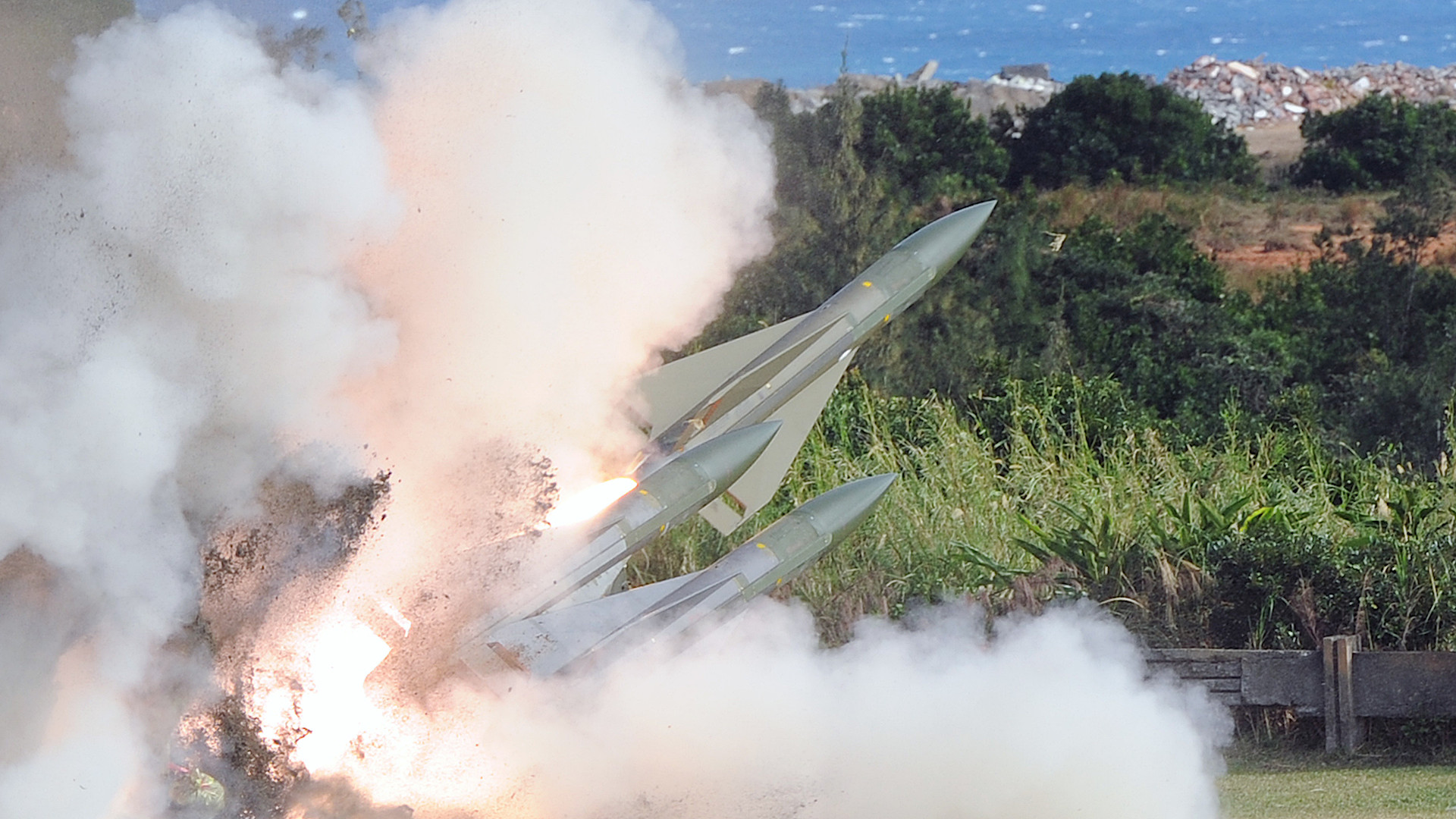The U.S. government is set to effectively buy back recently retired Hawk surface-to-air missile systems from Taiwan, which will then be transferred to the Ukrainian armed forces, according to Taiwanese media outlets. The War Zone has previously noted that sending Taiwan’s Hawks to Ukraine would make good sense given that the latter country has a somewhat dire need for additional air and missile defense capacity. The U.S. military and the Spanish government have previously announced plans to deliver Hawk systems and stocks of MIM-23 missiles for them to Ukraine.
The China Times newspaper in Taiwan appears to have first reported on this deal, citing anonymous sources, earlier today. U.S. and Taiwanese authorities came to this agreement sometime last year, according to that story. Taiwan has previously publicly pledged humanitarian aid for Ukraine and weaponized drones of Taiwanese origin have appeared in the hands of Ukrainian forces.
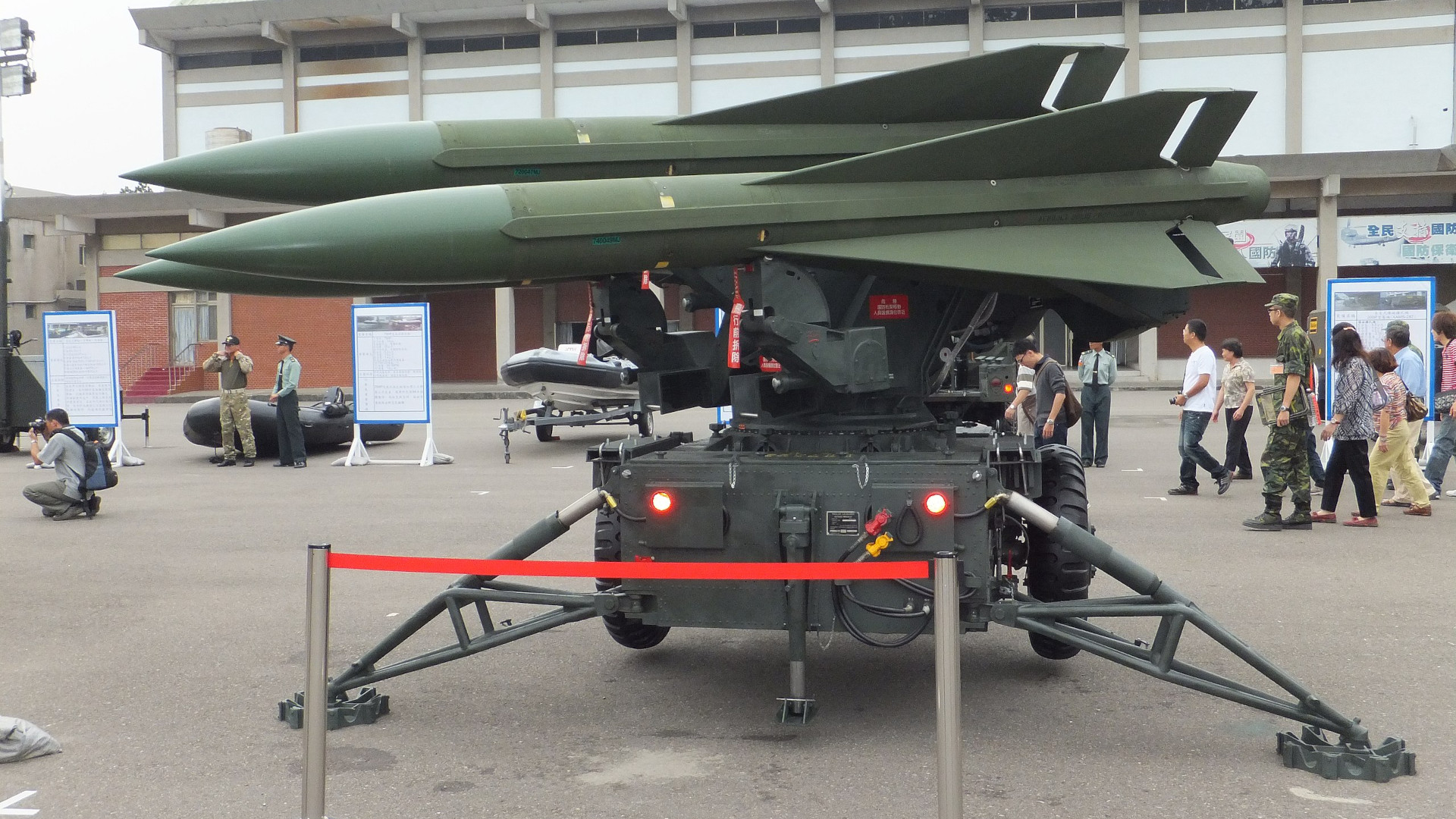
“We will not discuss specific numbers related to production capacity or inventory, nor will we discuss the location or unit where Ukraine security assistance is drawn from,” a Pentagon spokesperson told The War Zone when asked about the report. “We will not discuss specific equipment before it is announced.”
In November 2022, the U.S. military did announce the allocation of “funding to refurbish HAWK air defense missiles for inclusion in future Presidential Drawdown packages” as part of a larger aid package being paid through the Ukraine Security Assistance Initiative (USAI). A “drawdown” in this context, which is a separate security assistance mechanism, refers to the transfer of materiel directly from U.S. military stocks. The last U.S. military user of Hawk was the Marine Corps, which retired the last of its systems in the early 2000s.
In February, the U.S. military also said it would purchase two “HAWK air defense firing units” using USAI funds.
The Taiwanese military formally retired the last of its Hawk systems – the name of which is actually an acronym standing for Homing All the Way Killer – on June 29, replacing them with domestically-developed Tien Kung (Sky Bow) III surface-to-air missile systems. Taiwan’s armed forces received their first Hawks in 1960. It acquired additional systems, including more advanced variants, as well as upgrades for its existing examples, in the subsequent decades.
The video below includes clips from Taiwan’s Hawk retirement ceremony last month and of these systems being fired during training in the past.

The last Hawks in Taiwanese service, which would be best maintained and most readily transferable to Ukraine, were so-called Phase III versions of the Improved Hawk (I-Hawk). Developed in the 1980s, the Phase III I-Hawk was the most advanced version of the system to see service in the United States and was also exported to a number of other countries.
Complete Hawk systems prior to the Phase III upgrades included a Pulse Acquisition Radar (PAR), a Continuous Wave Acquisition Radar (CWAR), a High-Power Illuminator Radar (HPIR), and a Range Only Radar (ROR), as well as a number of three-rail launchers and centralized fire direction centers. The earlier versions of the system (Hawk, I-Hawk, and I-Hawk Phase I and II) featured different specific types of radars in these roles, but all functioned in more or less the same way.

The PAR and CWAR provide high and low-altitude target detection, respectively. The HPIR is then used to track the target and ‘illuminate it’ for the intercepting missiles, which home in on the reflected radar energy. The ROR is there to provide a backup system for supplying range information and is at least somewhat less vulnerable to enemy jamming given that it is not transmitting by default during an engagement.
The Phase III version of I-Hawk introduced all-new AN/MPQ-62 CWARs and AN/MPQ-61 HPIRs, and eliminated the RORs entirely. The AN/MPQ-50, the radar that had been introduced for the PAR role with the original variant of I-Hawk in the 1970s, remained in use.
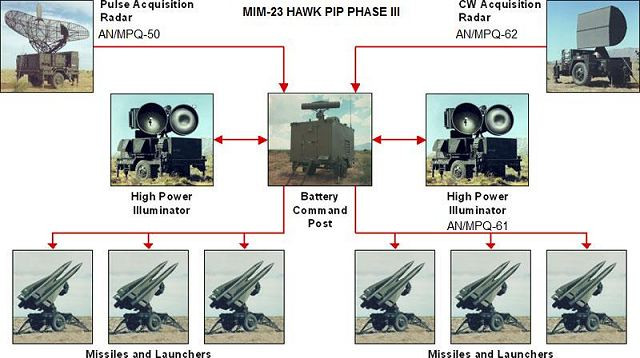
The Phase III variant had a number of other substantial upgrades to the rest of the system, as well. This included the addition of a Low-Altitude Simultaneous Hawk Engagement (LASHE) capability allowing it to target multiple low-altitude threats at the same time.
Any retired Taiwanese Hawk systems could conceivably be upgraded further before being sent to Ukraine, as well. A number of countries that continued operating the system after it was retired in the United States acquired a further advanced version called Hawk XXI or Hawk 21. This appears to be the type that Spain began sending examples of to Ukraine last year.
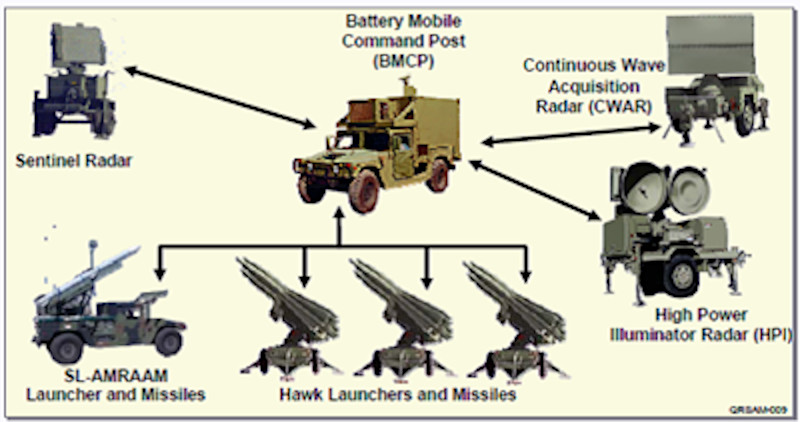
This configuration uses the AN/MPQ-64 Sentinel radar instead of a separate PAR and CWAR. It can also make use of the same fire direction center used in some versions of the National Advanced Surface-to-Air Missile System (NASAMS). Ukraine has already received AN/MPQ-64 radars and NASAMSs.
The Ukrainians may already have various capabilities that would allow them to link Hawk systems to other existing radars. The Pentagon has publicly disclosed that it has sent at least one “engagement operations center” (EOC) associated with the Integrated Air and Missile Defense Battle Command System (IBCS). IBCS is a highly capable air and missile defense networking architecture that can be used to link together a variety of sensors, interceptors, and other systems, as you can read about here.

When it comes to sending Taiwan’s retired Hawks to Ukraine, there is also the matter of what specific types of MIM-23 missiles might go with them. It’s unclear what variants Taiwan had been using with its Phase III I-Hawks more recently. A number of improved variants were developed in parallel to the upgrading of the overall system.
The first generation of I-Hawk had come along with upgraded MIM-23Bs, which had a larger warhead, a new rocket motor, and an updated guidance package compared to the original MIM-23As that had first entered service in 1959.

MIM-23C and MIM-23D missiles were subsequently introduced in the 1980s. The differences between these two types are not entirely clear, but both featured improved electronic counter-countermeasures (ECCM) designed to reduce the effectiveness of enemy jammers.
All subsequent MIM-23 versions came in pairs, each with the same general upgrades, but in overall packages based around the earlier C and D variant designs.
The MIM-23E/F variants had new features that improved their ability to find their targets even through radar clutter at very low altitudes or in environments with heavy enemy jamming, while the MIM-23G/H types introduced new nose sections.

Also known as Enhanced Lethality Missiles, the MIM-23J/K types had an improved warhead and fuzing system specifically designed to give the missiles a lower-end anti-ballistic missile capability. The last pairing, the MIM-23L/M, had the same fuzing improvements as the J/K types, but without the new warhead.
Whatever the case, Hawk could offer very useful additional low and medium-altitude/medium-range air defense capacity for Ukraine. Phase III I-Hawks with LASHE, a capability developed specifically to improve the system’s utility in defending against high-volume strikes, seem especially well suited to Ukraine’s needs given that the country is under regular threat of barrages of Russian cruise missiles and drones. If there are supplies of MIM-23J/K missiles to be had, it isn’t clear it they could potentially provide some additional defense against Russia’s Iskander short-range ballistic missiles, but they do have some anti-ballistic missile capability.
Hawk also has the benefit of being a relatively mobile system, with its launchers, radars, and fire direction centers all being truck or trailer mounted. With Ukrainian forces now on the advance, being able to readily move air and missile defense assets forward as needed, as well as the ability to reposition them in response to sudden changes on the battlefield or to avoid enemy counter-attacks, is especially important. Russian aviation has taken its toll on frontline Ukrainian armor during the ongoing counter-offensive. Hawk could help with that problem.
In addition, Hawk also fits into a middle-tier air and missile defense system category that the United States really does not have at present. This has been a level of capability that has been extremely important for the Ukrainian armed forces. It has come to the point that there are concerns about whether its stocks of missiles for its primary system in this tier, the Soviet-designed Buk, could be running dangerously low. As such, Hawk could be especially valuable for filling any resulting capacity gaps.
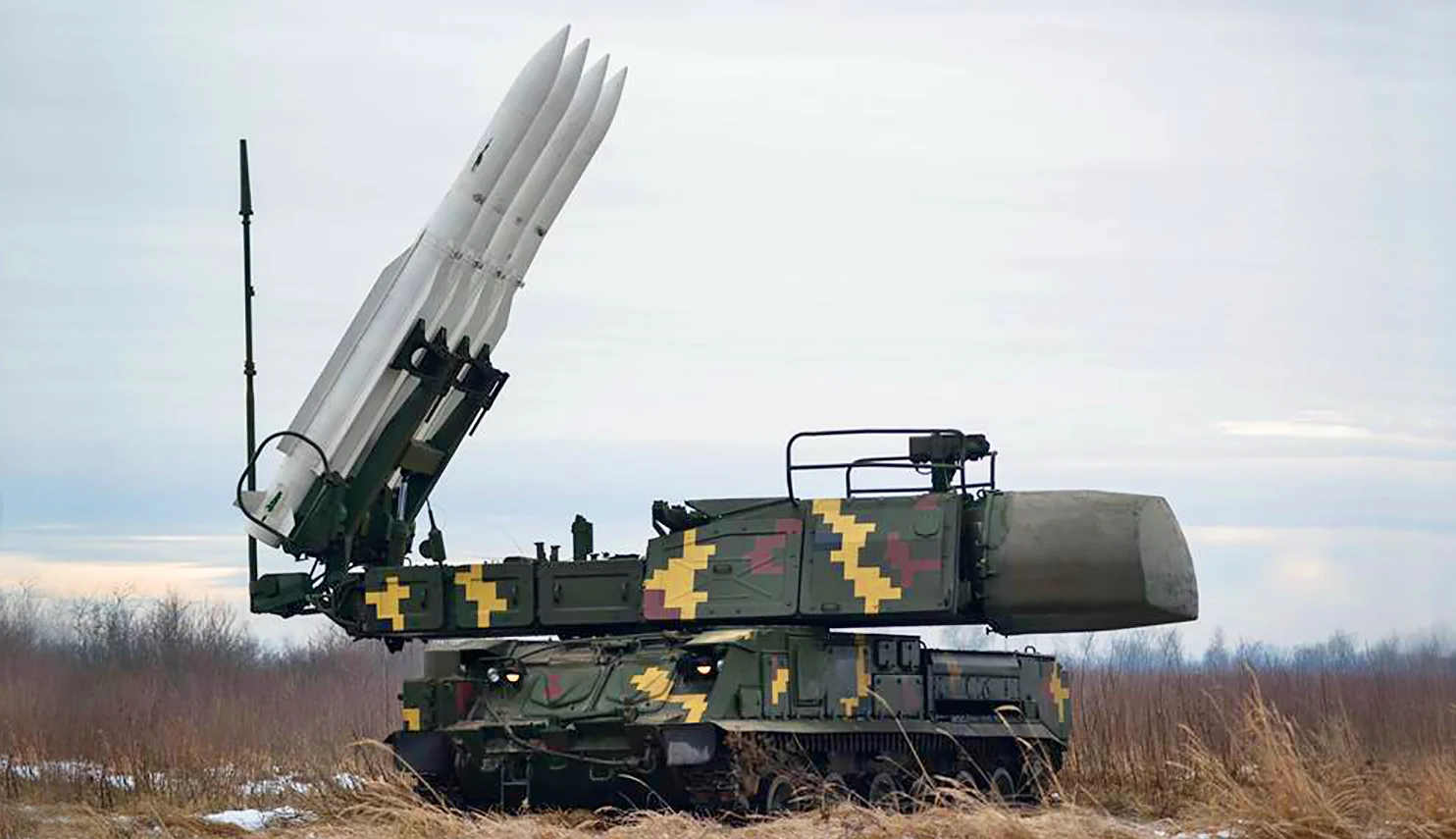
All told, it still remains to be seen when, or if, Ukraine might receive ex-Taiwanese Hawks by way of the United States. At the same time, though an older surface-to-air missile system, Hawk is still quite functional and could help Ukraine meet its still very significant air defense needs.
Howard Altman contributed to this report.
Contact the author: joe@thedrive.com
